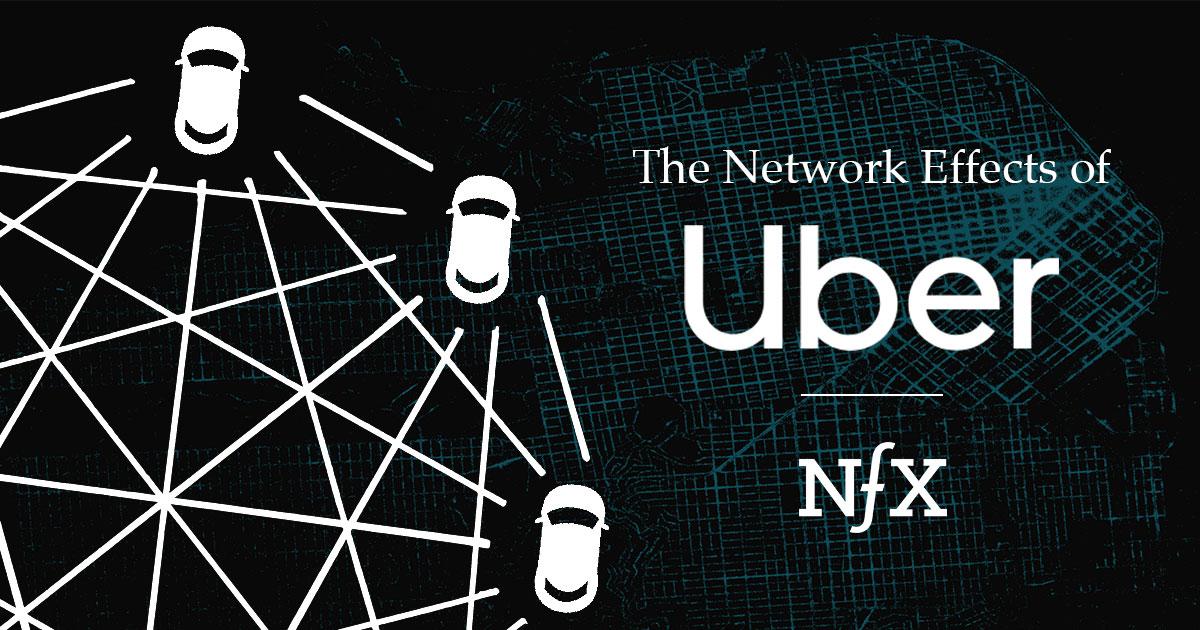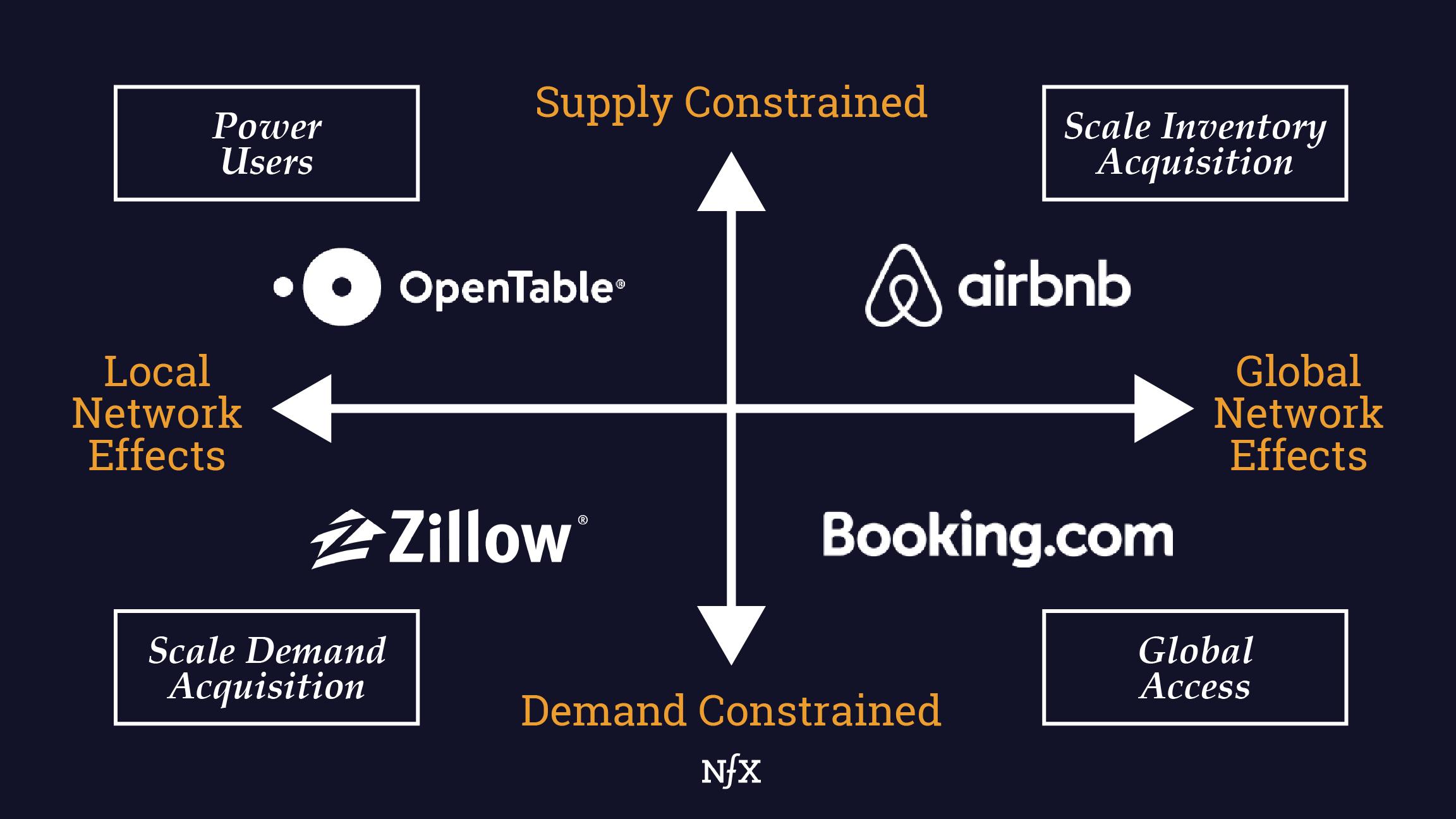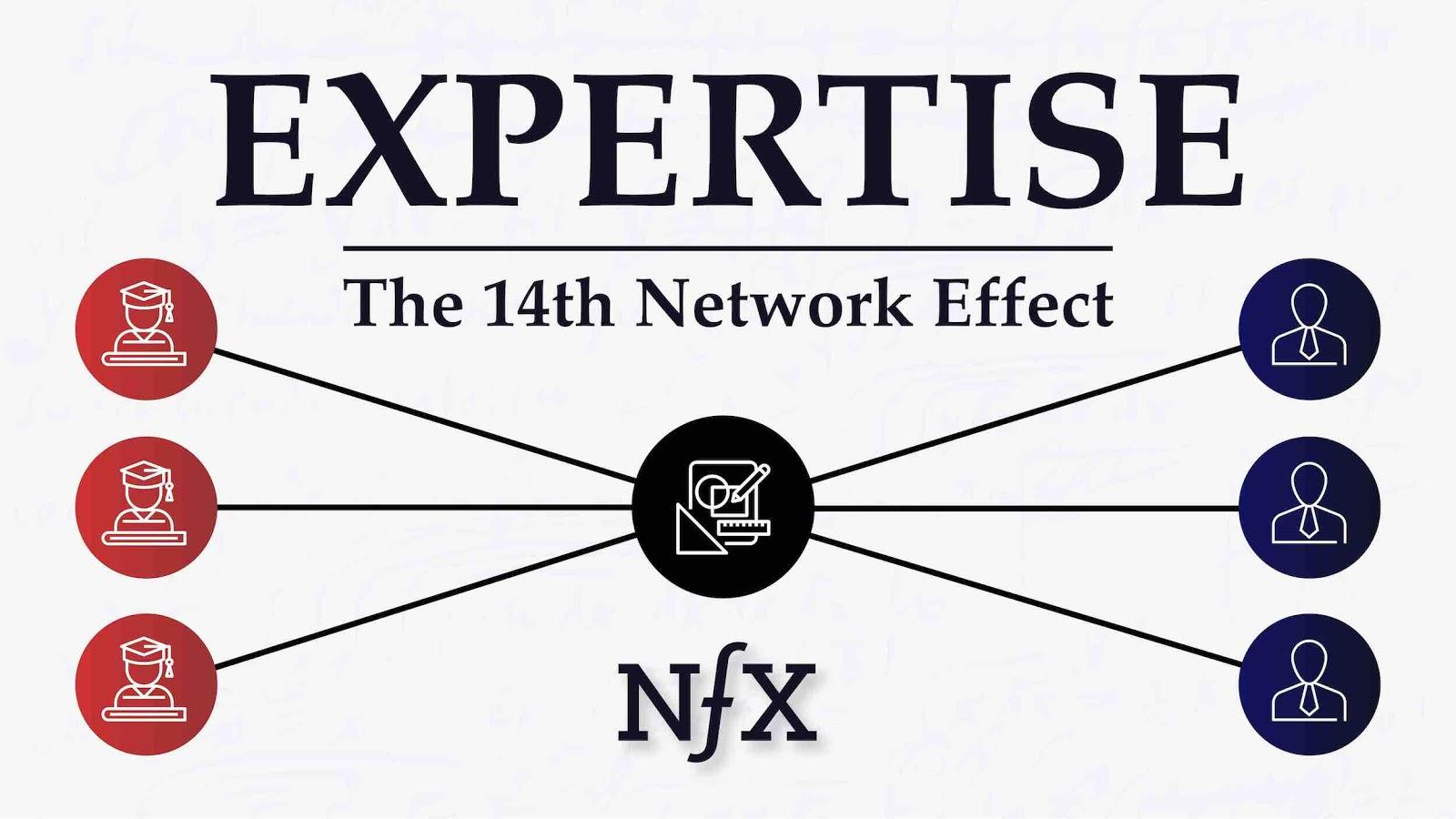

While network effects are often referred to as a singular phenomenon, we’ve done a lot of work to dispel this myth. In 2017 we published the NFX Manual where we laid out 13 different types of network effects we had identified over the prior 15 years. At the time, we said there were “13 and counting”, knowing that more would show up as we work with 100s of businesses with network effects.
Today, we’re sharing the newest network effect we’ve identified: a 14th type that we call Expertise Network Effects (nfx).
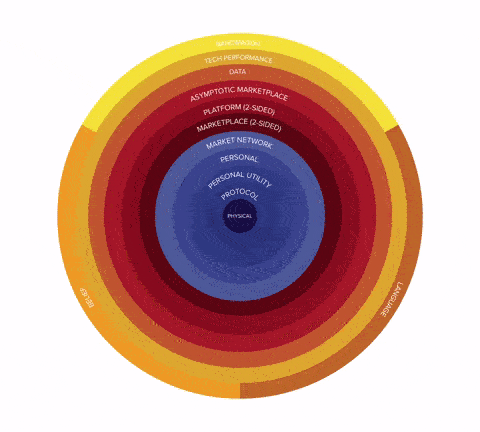

Products which can develop “expertise” network effects are typically tools used by professionals to do their job — the instruments with which they ply their craft. As professionals become more skilled in their jobs, they also level up their expertise in tools required to do their jobs. If the tools are sophisticated enough, the tools require particular expertise of their own.
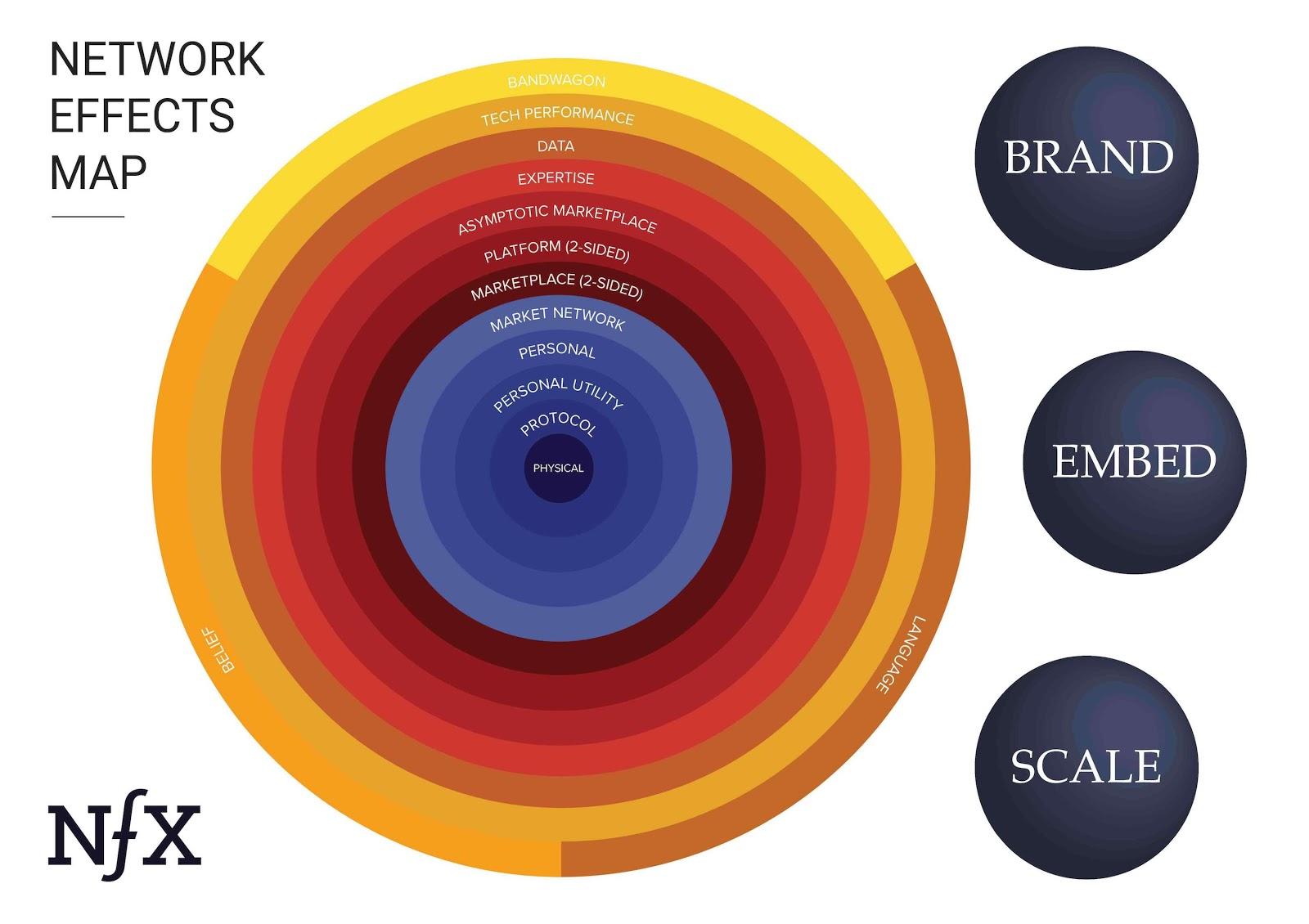

Employers often require proficiency in such tools when hiring, and so professionals have a strong incentive to develop expertise in tools with wide adoption that they can list on their resume and use as selling points on the labor market.
Companies likewise become more likely to employ the tools with the widest adoption by professionals because a) they want their employees to be able to interface to other companies in the industry, and b) they want to be able to attract the top talent who likely will want to use the most popular tool, and c) they know they can more easily replace the professional with someone else trained on the most popular tool.
And this is where the network effects kick in — for every new person in the labor market that develops expertise in a given product, the more valuable that product becomes to all players using or integrating that tool; i.e. all the other skilled users of the product (see the Appendix at the end of the article for a more detailed explanation of the mechanics of this network effect).
Here are some examples of industries and products where you see strong expertise nfx:
- Accounting Software (Quickbooks)
- CRMs (Salesforce, Hubspot)
- Analytics (Google Analytics, MixPanel)
- Computer Languages (Python, React)
- Spreadsheets (Microsoft Excel)
- Architecture (Revit, Autocad)
- CMS platforms (WordPress)
- Design software (Adobe, Figma, Invision)
- Video editing (Adobe, Final Cut, Avid)
- Mechanical Engineering (SolidWorks, CAD, Avid)


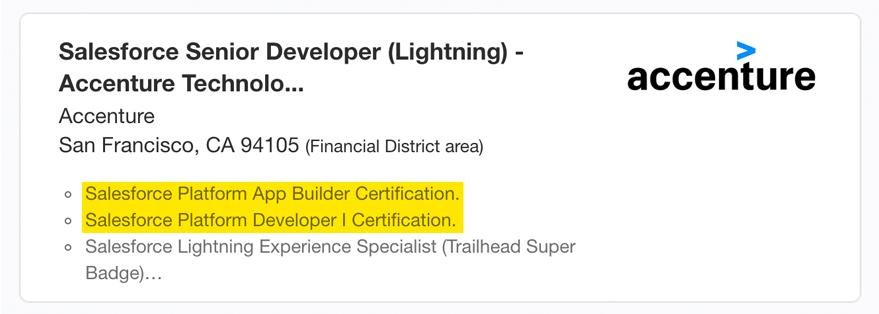

The two key distinctions of expertise nfx from other types of nfx is that a) they arise from the know-how required of a person to use a particular tool and b) the value transfer mechanism takes place through labor markets.
Expertise nfx can be seen as a form of individual embedding that aggregates into a network effect because the switching costs compound as a function of the collective effort it would take the entire industry to learn a new standard tool or protocol.
It follows that the strength of any tool’s expertise network effect grows as a tool reaches a critical mass point in the labor market and becomes the industry standard. You wouldn’t be wrong to point out that when becoming an industry standard, an expertise nfx has the flavor of protocol nfx.
It’s also true that the strength of a tool’s expertise nfx scales with the level of product-specific expertise required to use it. Sometimes called “groove in,” the more effort to learn a tool, the more resistance there can be to switch to an alternative. This helps to prevent multi-tenanting where an employee could use two tools equally well.
For example, if you spend months learning how to use Excel with its various shortcuts and interfaces, you’re likely to resist switching over to an alternative tool like Numbers. You’ve already developed a level of comfort and know-how that won’t all translate.
Our recognition of expertise nfx began during a conversation I had with Intuit Founder Scott Cook two years ago in Palo Alto. We were discussing different nfx and feedback loops to explore if there were ideas that could be used within Intuit, and he described how bookkeepers using Quickbooks as their system were more likely to get clients because other bookkeepers were also using Quickbooks. I came to realize that the phenomenon he was describing was a whole new type of network effect that didn’t fit into the 13 types we’d already identified.
Scott is one of the top minds I’ve ever met on the subject of network effects. We recently revisited this same conversation about Quickbooks and the power of network effects on the NFX podcast. Take a listen for a more detailed case study of Intuit’s expertise nfx.
Learnings for Founders
The implication of expertise nfx for Founders is perhaps hidden— if you’re a Founder competing with a professional tool like QuickBooks or Salesforce, you have to realize you’re not just competing with the direct product utility. You’re also competing with the ease of hiring people proficient in the industry standard — hiring managers who know to look for bookkeepers that know Quickbook, for example — versus your alternative with a smaller number of users.
With professional tools, you typically see the labor market coalesce around the industry standard. Salespeople are trained to use Salesforce, so even if you make a much better or easier-to-user alternative, you’re competing against the switching costs of learning something new compounded across the entire labor pool.
So even if your product is 10x better or easier to use, it won’t necessarily matter if it’s too different from the industry standard and requires too much additional time and effort to learn. This is why you often see professional tools cloning or mirroring features of the industry standard. Numbers and Google Sheets, for example, are a pretty close ripoff of Excel. They are still finding it difficult to displace Excel because of the strong expertise nfx Excel has accrued over the years.
It’s interesting to note that if you’re a Founder building a professional tool in a category with no clear incumbents, making your product easier to use will make it easier to spread but perhaps less defensible in the end. The easier it is to learn how to use one tool, and the more skill with your product translates to others, the lower the costs are to switching to an alternative.
If you’re a Founder building a tool for professionals, ask yourself which side you’re on. Are you competing against an industry standard with an expertise network effect, or are you operating in a white-space category?
If you are competing against an industry standard, have you done everything you can to minimize the switching costs, or find new use cases in order to avoid or complement the incumbent? If you’re in a white space, have you done all you can to foster expertise nfx in the labor market and between companies?
Expertise nfx can be a powerful foe or ally.
Appendix: the mechanics of expertise nfx
Expertise nfx are one of the more complicated types we’ve written about in terms of the underlying mechanism, so we’ve added this appendix to explain how they work at a more technical level.
Expertise nfx are 2-sided, so the cross-side network effects of increased supply (the experts) makes the product more valuable for employers or product-builders (demand) because they’ll have an easier time hiring different professionals who are skilled in the use of the same tools.
The indirect same-side network effects for supply come into play when, as demand for the expertise in a tool grows, all the existing experts in the tool gain more value from their expertise in that particular tool. In addition, there are also direct same-side network effects because professionals can exchange information and work together more easily if they’re using a standard tool.
This fulfills the purest definition of a network effect — showing how a product with expertise nfx grows in value as the network of users grows. As with other 2-sided network effects, there are multiple types of network effects — indirect and direct, cross-side and same-side, operating together all at once.
The expertise network itself is similar to a marketplace in structure. It consists of experts as supply-side nodes, product builders and end-users as demand-side nodes, and the tool itself as a common link between the two sides of the network.
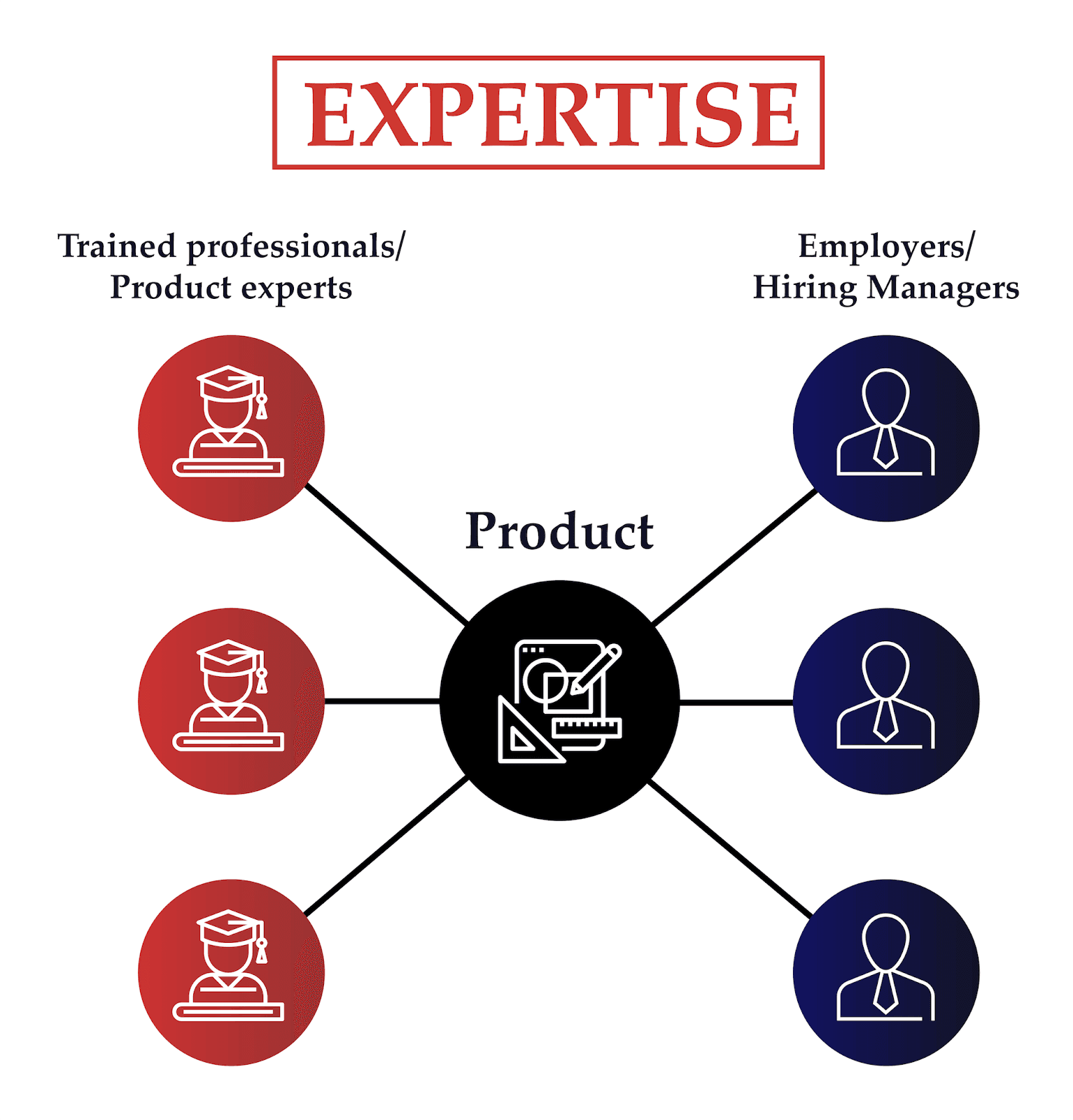

However, the expertise network effect looks more like protocol nfx than 2-sided marketplace nfx. Just as the ethernet standard became the dominant protocol after it had reached a critical mass of adoption by early local computer networks, so too a product with expertise nfx will become the dominant industry standard when it reaches a critical mass of adoption by professionals. And it will be difficult to replace for the same reasons it is hard to replace a protocol (like fax, which is still in use) — the switching costs are too high.
The NFX Manual notes about protocol nfx that:
The success of such an adoption strategy is often less about technology and more about marketing, social engineering, and choice of market niche. That’s why VHS beat Betamax, even though Betamax was arguably a better standard.
Similarly, products with expertise nfx and wide enough adoption will have an advantage over technically more advanced products with less users. Once a standard is established, a technically “better” alternative rarely sees much traction.
As Founders ourselves, we respect your time. That’s why we built BriefLink, a new software tool that minimizes the upfront time of getting the VC meeting. Simply tell us about your company in 9 easy questions, and you’ll hear from us if it’s a fit.


